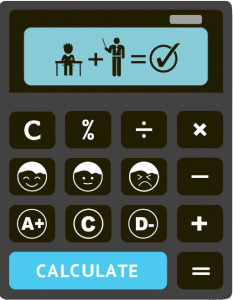Overview
In year 5 maths, you will learn about different strategies related to multiplication and division. These concepts will help you in many areas of math and beyond.
Learning Outcomes
After you have read this article, you will:
- Understand the difference between factors and multiples of a number
- Know how to find all factor pairs of a number
- Understand divisibility rules for 2, 5, 10, 3, and 6
- Know multiplication strategies to simplify calculations
- Know how to interpret remainders in division problems
Factors and Multiples
A factor of a number is any number that divides the original number evenly without a remainder. For example, the factors of 6 are 1, 2, 3, and 6 because these numbers can be multiplied together to give 6: 1 x 6 = 6, 2 x 3 = 6. A multiple of a number is any number that is obtained by multiplying the original number by an integer. For example, the multiples of 6 are 6, 12, 18, 24, and so on.
Finding All Factor Pairs of a Number
To find all factor pairs of a number, start with 1 and find all pairs of numbers that multiply to give you the number. The factor pairs of 20 are (1, 20), (2, 10), and (4, 5).
Divisibility Rules
Divisibility refers to the ability of a number to be divided evenly by another number without leaving a remainder. Here are some divisibility rules that can help you quickly determine if a number is divisible by 2, 5, 10, 3, and 6:
• A number is divisible by 2 if its last digit is 0, 2, 4, 6, or 8.
• A number is divisible by 5 if its last digit is 0 or 5.
• A number is divisible by 10 if its last digit is 0.
• A number is divisible by 3 if the sum of its digits can be divided by 3 without any remainder.
• A number is divisible by 6 if it is divisible by both 2 and 3.
Multiplication Strategies
Multiplication can be made easier by using strategies such as doubling and pairing factors that are easy to multiply.
For example, to multiply a number by 4, you can double it twice. In some cases, it helps to pair factors that are easy to multiply, such as 2 and 5. To multiply 12 by 25, which is \(2\times 2\times 3\times 5\times 5\), you can pair a 2 and a 5 to get 10 and then multiply 2, 3, and 5 to get 30. This gives you \(10\times 30\) = 300 as the final product.
Interpreting Quotients and Remainders
In division problems, the quotient is the number of times one number can be divided by another. The remainder is the amount left over after dividing. When interpreting remainders, it is important to consider the context of the problem. Here are two examples for you to consider:
Example 1:
If each bus carries 20 passengers, how many buses are needed to transport 92 passengers?
\(92\div 20\) gives 4 with a remainder of 12. So we need 4 buses and another 5th bus to carry the last 12 passengers. Here, we rounded up the answer.
Example 2:
How many cans of drink can be filled from 30 liters of drink if each can holds 4 liters?
Here, \(30\div 4\) gives 7 with a remainder of 2. This means that we can fill a little more than 7 cans. However, the answer to the question is 7 (rounded down), as only 7 cans can be completely filled with the drink.
Wrap Up
This was just an overview of some of the ideas you will come across in year 5 maths related to multiplication and division. If you need help understanding any of these concepts, please reach out to us today!






